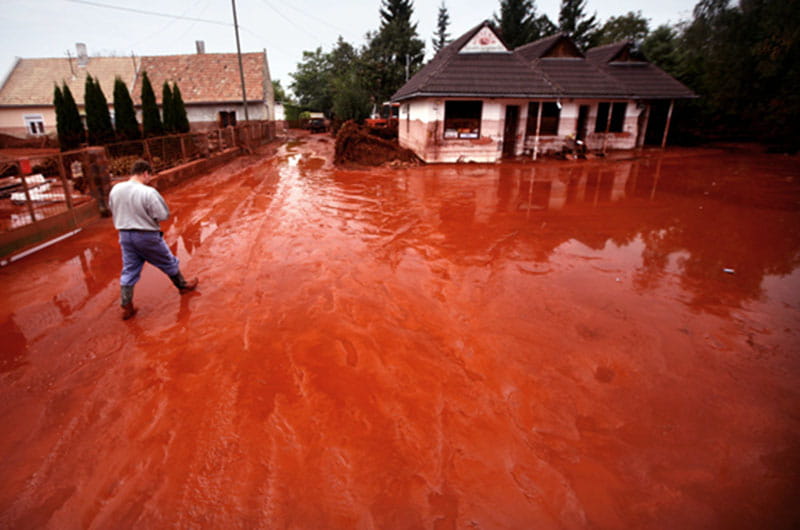How Aluminum Changed the World, for Good and Bad: A Q&A With Drexel Prof Mimi Sheller

- Drexel Environmental Collaboratory Releases Cross-Sector Findings on Severe Weather Recovery Challenges
- How and When Could AI Be Used in Emergency Medicine?
- Video Game Design Reaches New Heights in 'Skyscraper Games'
- MXene Current Collectors Could Reduce Size, Improve Recyclability of Li-Ion Batteries

For many of the pieces of modern life that emerged and spread during the 20th century, from air travel to electric service to cans of soda, you have aluminum to thank.
The strong but lightweight metal helped change the world in ways previously unimaginable. But the quest for more aluminum has also had damaging ripple effects on the environment and indigenous populations around the world.
Those two sides of the aluminum story help explain why Drexel sociologist Mimi Sheller has written a book about it. Sheller, a professor of sociology and the director of the Center for Mobilities Research and Policy, studies how new infrastructure and technology developments are changing the way people move around the earth — and whether they can avoid damaging the earth in the process. Her book “Aluminum Dreams: The Making of Light Modernity” was published by MIT Press earlier this year, and DrexelNow spoke with her about why this is a metal worth writing about.
How does a sociologist come to write a book about an element in the periodic table?
The kind of sociology I’m interested in has started to look at the intersection of social or human processes with material and environmental processes. That’s a really big emerging field for research right now, sometimes called human and natural systems research.
But my real interest in aluminum itself came out of my background of Caribbean studies. The Caribbean region throughout the 20th century was the biggest source of bauxite ore, the material mined to produce aluminum. When I started looking into the impacts of bauxite mining and its role in Caribbean history, it connected me to the global history of aluminum.
As far as its properties as a metal, what makes aluminum so useful?
Aluminum is very strong in proportion to its weight. So compared to steel or copper, it has this lightness and yet a great strength at the same time. It’s also nonmagnetic and has corrosion-resistant properties. The weight and strength factors make it really good for transportation, both in vehicles and in packaging. Its corrosion resistance and nonmagnetic qualities make it really useful in building applications and electrical equipment of any kind. When you put those things together, it became the ideal metal for spaceships and satellites.
What has been its social and historical significance?
The book looks at what I call the light side and the dark side. The light side is that the development of uses for aluminum and the accompanying innovation, creativity and design brought us all sorts of wonderful things in the 20th century. It helped the takeoff of civil aviation. It helped in bringing electric grids across the country. It brought us all kinds of things around the home that were lighter and more durable, and, of course, faster vehicles. And above all, I think the thing people think of most is packaging: aluminum cans and aluminum foil.
The dark side is about a different kind of social impact: the impact on the regions of the world where the mining takes place, and the pollutants that result. After bauxite ore is mined, you’re left with a substance called red mud, which has all kinds of heavy metals and caustic substances in it. And the smelting of the ore into actual metal is a really energy-intensive process. It required the building of huge hydroelectric dams, many of the biggest in the world. And though hydroelectric power is a “clean” energy in terms of carbon dioxide, it floods tens of thousands of acres of land. Many of the places where that happened were on land appropriated from indigenous, tribal or aboriginal peoples. So there have been a lot of human rights violations that have helped make what I call “light modernity” possible.
What’s the answer for the future?
The project took me from the red mud lakes left behind in Jamaica to the hydroelectric projects being built in Iceland. When I went to Iceland, there was a big protest movement against smelting. But what I found was that the activists themselves were very dependent on aluminum. We flew in airplanes to get there. We put up aluminum tent poles. We cooked vegan community meals in aluminum pots. It made me think that there are some contradictions here. We can’t just easily get rid of this metal.
Aluminum is really valuable, and we actually need to value it more. As consumers, we need to appreciate it and not just throw it away. It only takes 5 percent as much energy to recycle your aluminum as it does to make it new. In the U.S., we throw away about 55 billion cans each year, all of which could go back into production quickly. But I realized that the other side that needs to be addressed is the production side. A handful of big transnational corporations control the industry, and they really need more transparency, accountability and corporate responsibility.
Drexel News is produced by
University Marketing and Communications.
